NCERT Solutions Class 9 Science Chapter 11 - Sound
NCERT Solutions for Class 9 Science Chapter 11 – Sound are essential for understanding key Physics concepts in the CBSE curriculum. These well-structured answers help students grasp topics like the production, propagation, and reflection of sound, along with frequency, pitch, and the speed of sound. Designed as per the latest syllabus, these solutions strengthen conceptual clarity and improve exam preparation. Ideal for revision and practice, they encourage logical thinking and scientific understanding, making them a valuable study tool for scoring well in Class 9 Science exams.
NCERT Solutions Class 9 Science – Sound – Exercise Images
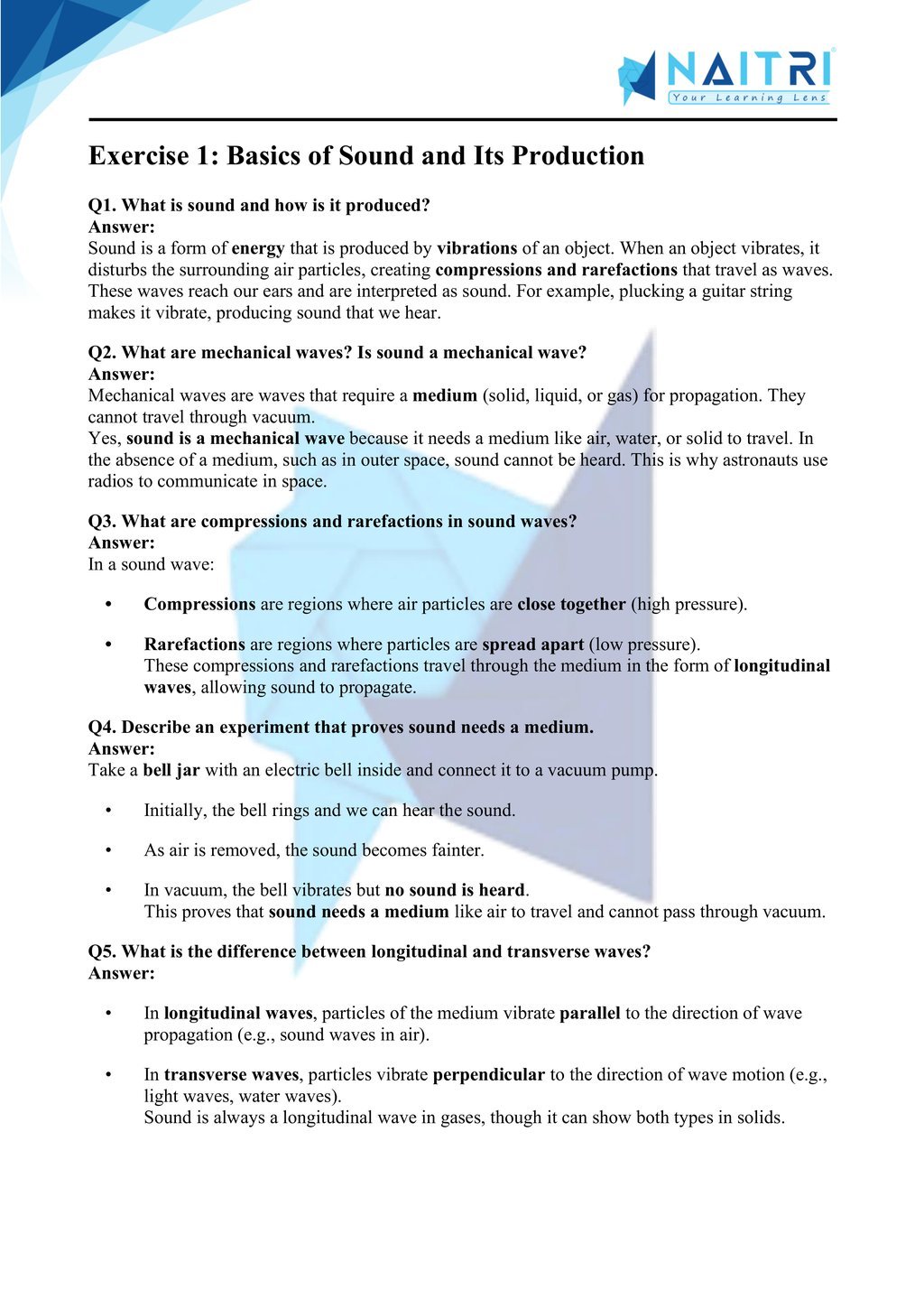
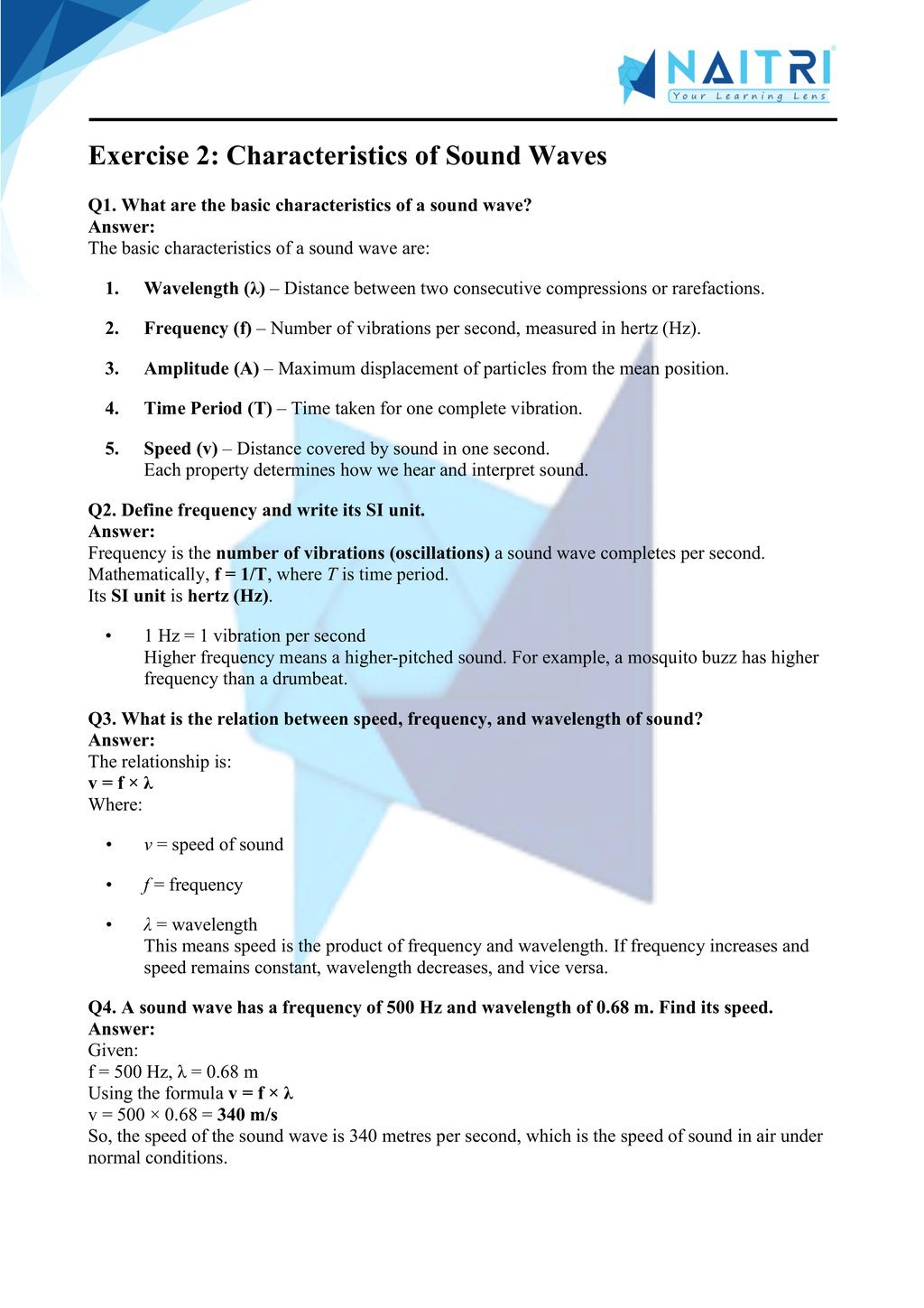
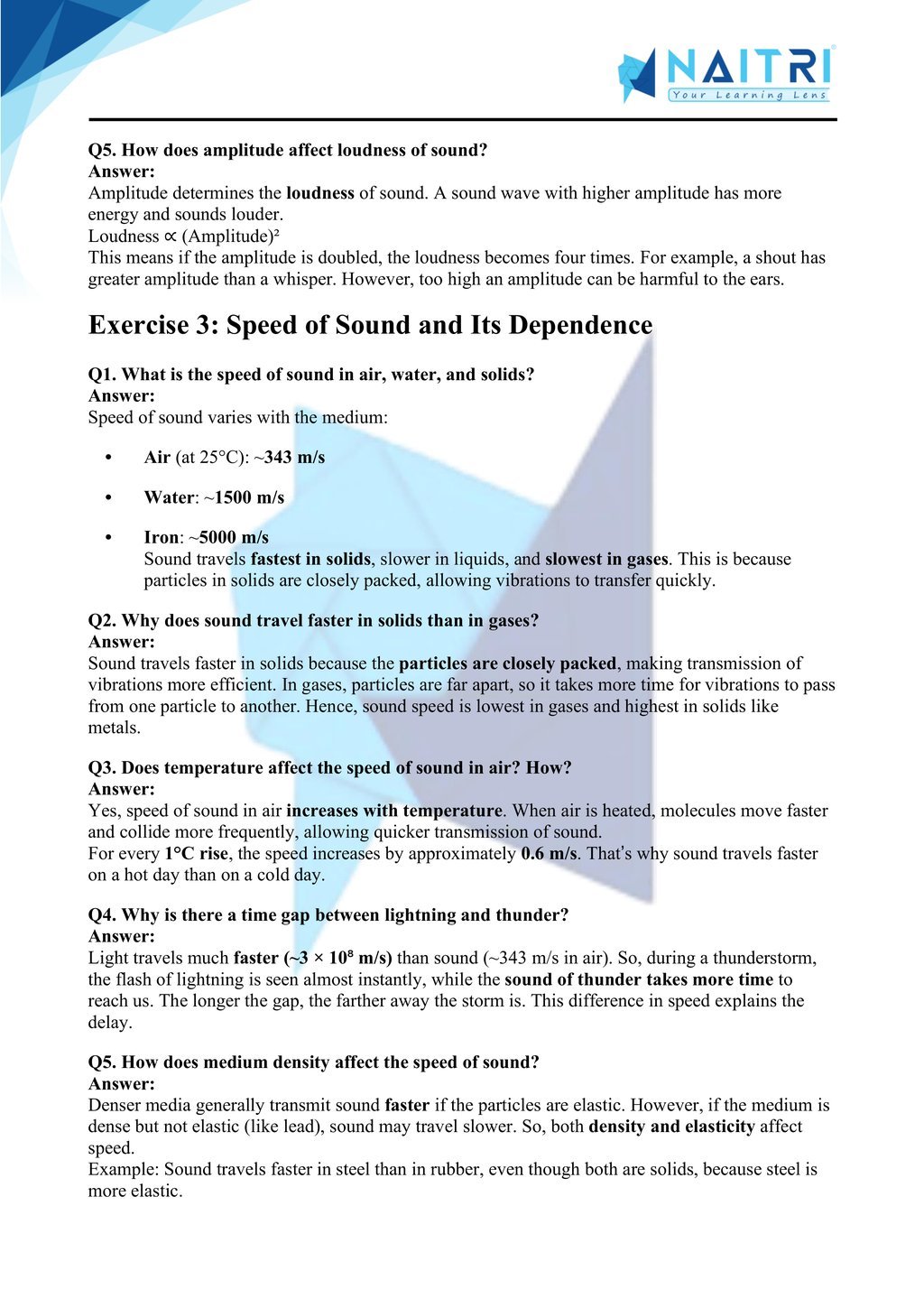
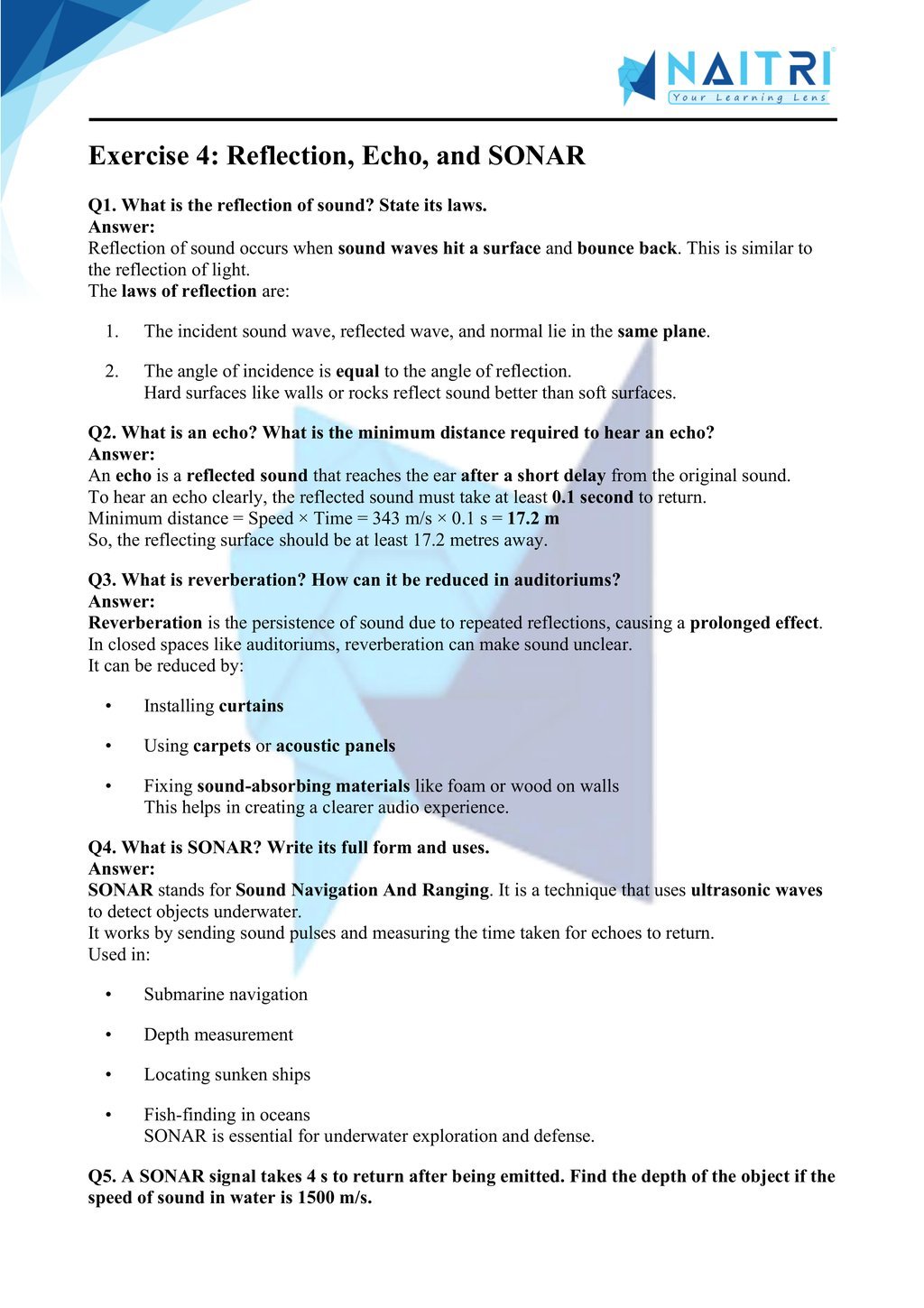
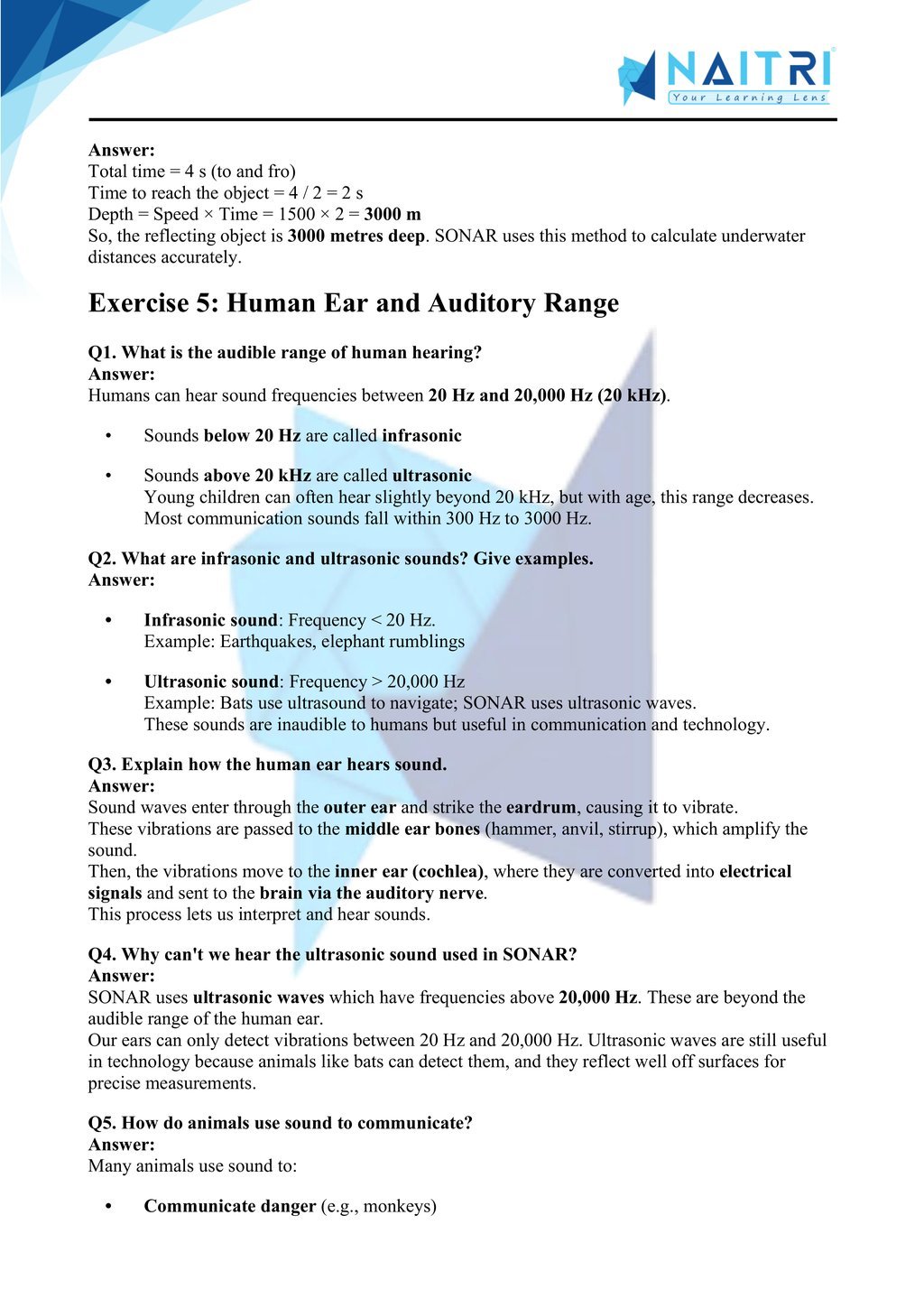
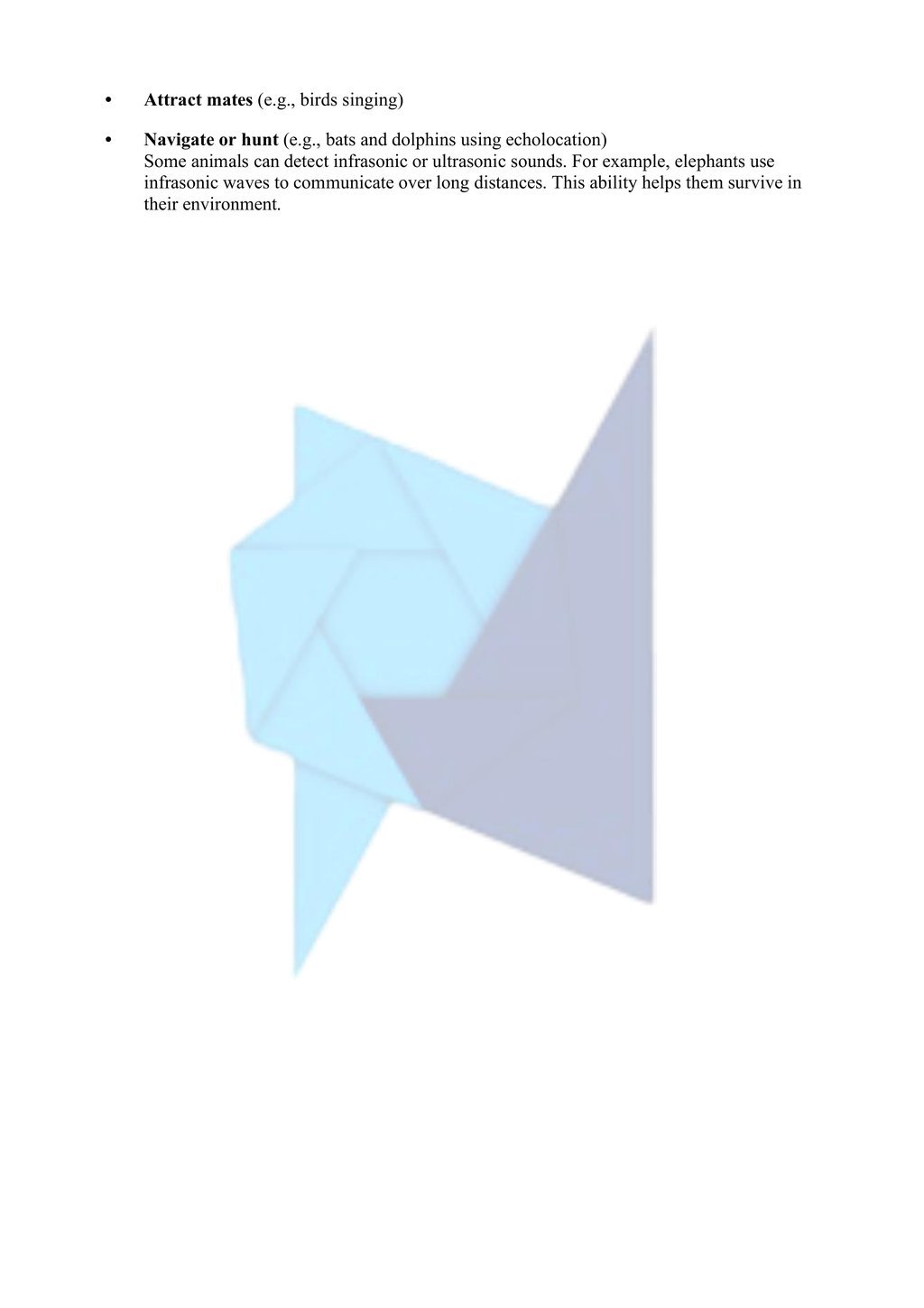
Experience Science Like Never Before – With AR!
Understanding Sound is now more exciting and immersive! With the NAITRI App, you can explore complex science concepts through Augmented Reality (AR). Visualize sound waves travel, vibrations ripple, and echoes reflect — right in front of you. Our AR-powered lessons make learning interactive, 3D, and fun, helping you retain concepts better and enjoy every topic.



Visualize . Interact . Understand . The future of learning is here
Sound – Important Questions with Answers
1. What is sound?
Answer: Sound is a form of energy that produces the sensation of hearing in our ears.
2. How is sound produced?
Answer: Sound is produced by vibrating objects.
3. What type of wave is sound in air?
Answer: Longitudinal wave.
4. Through which medium can sound travel?
Answer: Sound can travel through solids, liquids, and gases, but not through a vacuum.
5. What is the speed of sound in air at room temperature?
Answer: Approximately 343 m/s.
6. Which medium allows sound to travel the fastest?
Answer: Solids.
7. What is the SI unit of frequency?
Answer: Hertz (Hz)
8. Define amplitude.
Answer: Amplitude is the maximum displacement of particles from their mean position in a wave.
9. Define frequency.
Answer: Frequency is the number of vibrations per second.
10. Define time period.
Answer: Time period is the time taken to complete one full vibration or oscillation.
11. What is the relation between frequency and time period?
Answer:
Frequency (f)=1Time period (T)Frequency (f)=Time period (T)1
12. What is the wavelength of a sound wave?
Answer: The distance between two consecutive compressions or rarefactions.
13. State the formula for the speed of sound.
Answer:
v=λ×fv=λ×f
Where:
v = speed,
λ = wavelength,
f = frequency
14. What is ultrasonic sound?
Answer: Sound with frequency more than 20,000 Hz.
15. What is infrasonic sound?
Answer: Sound with frequency less than 20 Hz.
16. What is the audible range of human hearing?
Answer: 20 Hz to 20,000 Hz.
17. Name one animal that can hear ultrasonic sound.
Answer: Bat
18. What is the function of the eardrum?
Answer: The eardrum vibrates when sound waves strike it and sends signals to the brain via the inner ear.
19. What is echo?
Answer: Echo is the reflection of sound that is heard after the original sound.
20. What is the minimum distance required to hear an echo?
Answer: 17.2 metres (at room temperature, assuming sound speed as 343 m/s).
21. What is SONAR?
Answer: SONAR (Sound Navigation and Ranging) is a device used to find the depth of a sea or locate underwater objects using sound waves.
22. What is reverberation?
Answer: The persistence of sound due to repeated reflections after the source has stopped producing sound.
23. How can reverberation be reduced in halls?
Answer: By using sound-absorbing materials like curtains, carpets, and false ceilings.
24. What is pitch of sound?
Answer: Pitch is the sensation (highness or lowness) of a sound determined by its frequency.
25. How does sound help in communication?
Answer: Sound allows us to speak, listen, and understand, thus making verbal communication possible.
Sound explores how sound is produced, transmitted, and heard. It introduces concepts like vibration, frequency, amplitude, pitch, and echo. The chapter also explains the working of the human ear and applications like sonar. Understanding sound waves connects physics with biology and everyday technology, making it easier for students to appreciate the role of sound in communication and the environment.
Related Chapters You May Like
- Chapter – 1 Matter in Our Surroundings
- Chapter – 2 Is Matter Around Us Pure
- Chapter – 3 Atoms and Molecules
- Chapter – 4 Structure of the Atom
- Chapter – 5 The Fundamental Unit of Life
- Chapter – 6 Tissues
- Chapter – 7 Motion
- Chapter – 8 Force and Laws of Motion
- Chapter – 9 Gravitation
- Chapter – 10 Work and Energy
- Chapter – 12 Improvement in Food Resources
Download Naitri App
Easy, Visual Learning — Right on Your Phone
Learn with Augmented Reality! The Naitri app makes CBSE and MP Board concepts interactive and fun — even in low-resource settings. Watch lessons, complete homework, take tests, and track progress — all in one place. Anytime. Anywhere.
Available on








